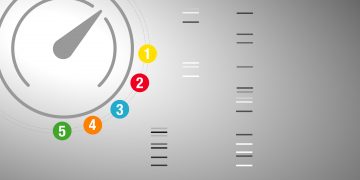
Stain-Free Western Blotting: Faster Results, Better Data
Western blotting is a well-accepted technique which has a place in every molecular biologist’s toolkit. However, the traditional process is lengthy and filled with manual steps, which can result in variability. Stain-Free technology can shorten your workflow and improve your data. Read our top three reasons to incorporate Stain-Free technology in your western blotting workflow.

Western Blot University
Join us for an in-depth dive into western blotting. Whether you are new to western blotting or an experienced user looking for tips, this five-part webinar series has something for you. Slides and downloadable resources will be available for each webinar. Complete all five classes to receive a certificate of completion and a colorful Western Blotting University poster.

Fluorescent Immunoblots and Multiplex Analysis
Presented by: Gary F. Ross, PhD, Proteomics Field Application Scientist
View on demand
Learn best practices for fluorescent western blotting, including multiplex analysis and image acquisition.

Advancements in Western Blotting Technology: A Western Workflow That Delivers More Precise, Accurate, and Reproducible Results
Presented by: Sean C. Taylor, MBA, PhD, Field Application Scientist Manager
View on demand
Learn how to produce journal-ready reproducible and quantitative western blot data.

Discover Our Capabilities
From flow cytometry to chromatography to western blot imaging to PCR plastics, learn more about Bio-Rad and see what’s possible in your research.

10 Tips for Western Blot Detection of Phosphorylation Events
Being able to interrogate protein phosphorylation events and aberrant phosphorylation levels is critical to our understanding of various biological and pathological processes. However, detection of phosphorylated proteins in western blots can be challenging. These ten tips will help you generate robust data and cleaner blots.

See the Signal — Illuminating the Pathway to Confident Western Blot Detection of Phosphorylated Proteins
Presented by: Rachael Preston, PhD, Applications Scientist, Bio-Rad Laboratories
View on demand
The most common method for assessing the phosphorylation state of a protein is western blotting. In this webinar we talk you through how to fine-tune your western blot protocol to detect phosphorylation events and generate publication-quality western blots.

Six Tips to Improve Your Co-IP Results
Co-immunoprecipitation (co-IP) is a great way to identify target protein complexes and interacting partners. Though the technique can be highly informative, it is also challenging to master. The six tips and protocol outlined in this article will help you achieve successful co-IP results.

10 Tips for Western Blot Detection of Proteins Present in Tissue Lysates
Extracting proteins from tissue lysates for western blotting can be a challenge. From knowing how to process your tissue to verifying protein loading to including suitable controls, there is a lot to keep track of. The ten tips in this article can help you on your way to generating reproducible and reliable blots and do better western blotting overall.

Defining the New Normal in Quantitative Western Blot Data
Normalization of western blot data is very crucial in quantitating proteins. Normalization of band intensity of proteins of interest with the band intensity of housekeeping proteins (HKP) is routinely done in labs. But more and more journals question the validity of using HKPs in normalization and are demanding more validations and tests. An alternative method is to use total protein normalization (TPN) for normalization. Explore the TPN option and see how you can get reliable western blot data easily.
